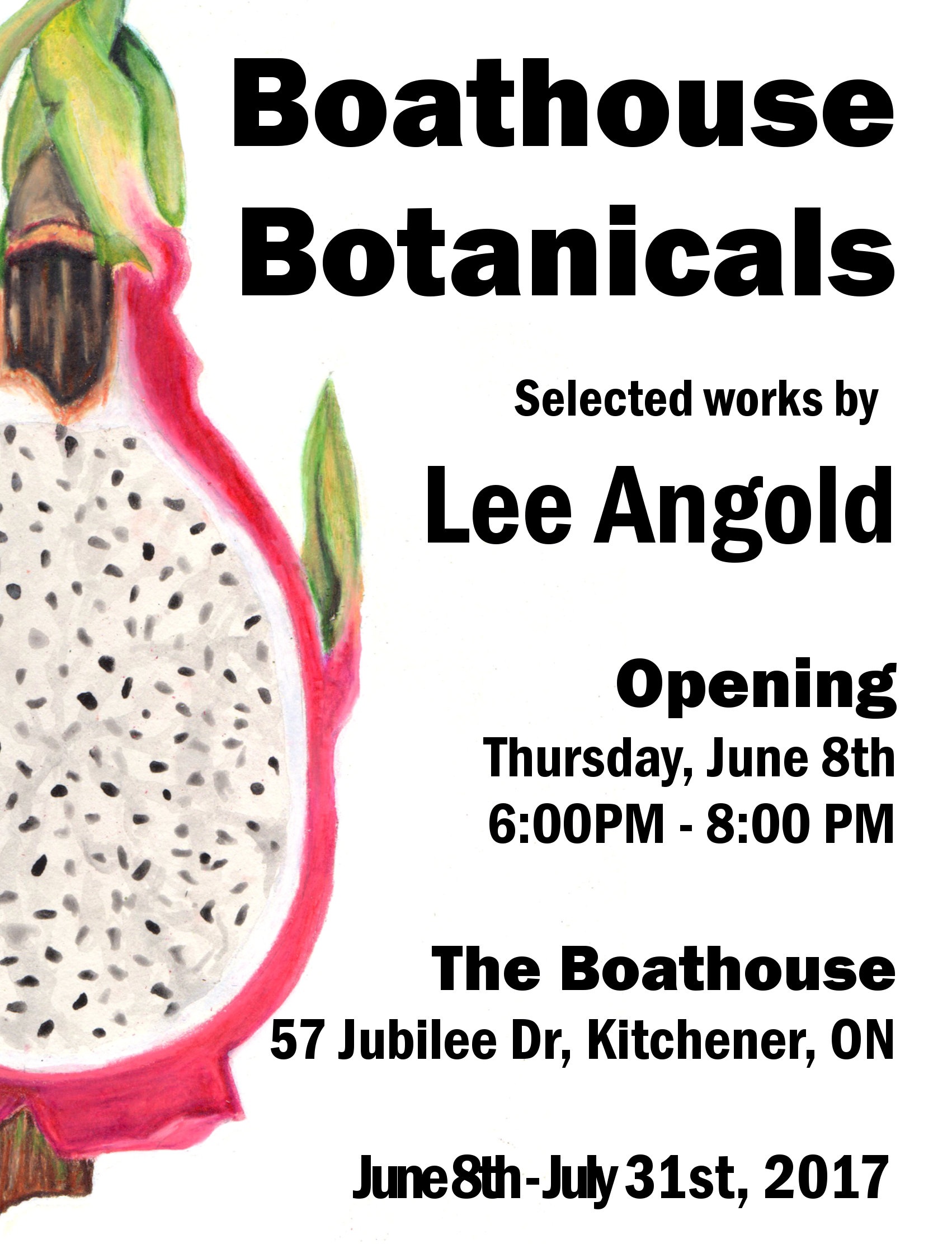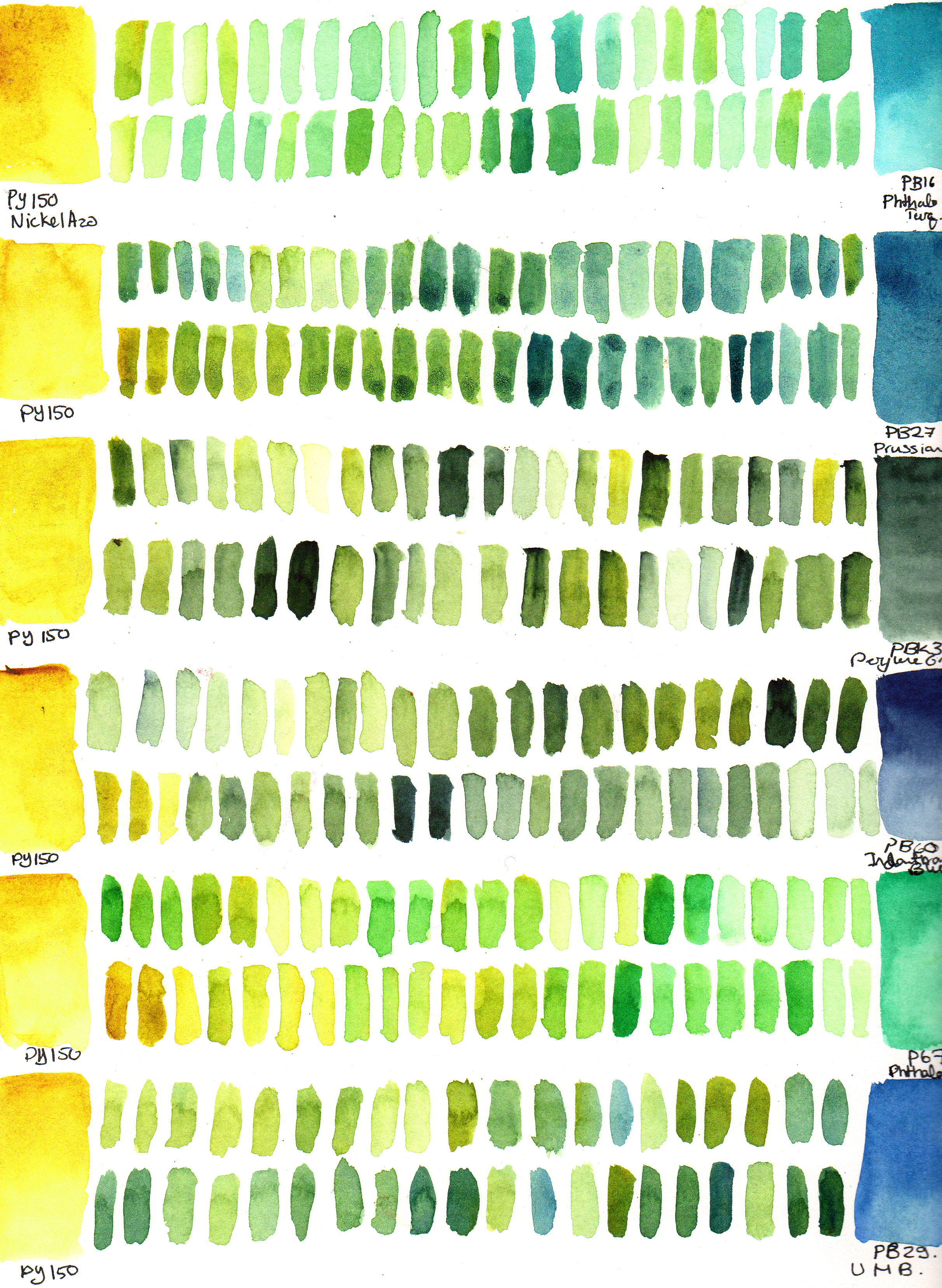In the past few years, many people have asked me how they can improve their art skills. My answer is usually simple – just practice. Put in hundreds and thousands of hours into your art practice. Do the work. Your skills will improve. However, a couple of times recently I have received this question from people who are already putting in many hours practicing. These people are putting in the time, but feel like their skills are not progressing as quickly as others. They wonder whether there is something else they can be doing to improve more quickly.

Cheesy Social Media Post about the effects of Practice: Two ramps/wild leeks illustrations, painted 8 months apart
I thought about this for a while. The largest improvements in my art skills always occur when I have been practicing frequently. This is the main reason why I do daily art challenges. Each time I devote myself to practicing daily, I see very dramatic improvements in my art skills in the short space of days/weeks/months.
However, when I thought about it, there are some things I’ve practiced daily with much less dramatic results. As a teenager, I played cello. I played cello very poorly. Each day I pulled out my cello for 45 minutes of practice, in addition to weekly orchestra practices, weekly private lessons, weekly theory/harmony lessons and intensive orchestra camps in the summer. All my music lessons and practice did have some effect. After a decade of putting in the time I was only a pretty bad cello player instead of an awful one. It would be easy to blame this on a lack of natural talent. However, I don’t believe that natural talent makes such a difference.
Practice with Intent
I started thinking about how I practice art versus how I practiced cello. I noticed a huge difference.
When I practiced cello, I just pulled out my cello and music and started playing. I moved my hands and fingers around whichever way I knew how. I didn’t have a goal when I practiced. My intention was just to get through my prescribed 45 minutes of practice. I would keep making the same mistakes over and over.
When I practice art, I am always challenging myself. Whether I am doodling in a sketchbook, working on a client commission or a large illustration, my first step is always to ask myself “What new thing(s) am I going to try with this piece?”. I always set myself challenges and goals.
Sometimes the challenge comes in the form of a complex and unfamiliar subject, such as the bedraggled horse chestnut leaf I chose for day 60 of my daily leaf challenge.
Other times, I challenge myself to meet long-term art goals. One of my main shortcomings is that my compositions lack depth. I will paint a single or multiple subjects all in one flat plane. I repainted the ramps illustration at the top with the specific goal of introducing some depth to an otherwise simple subject/composition.
Sometimes, I challenge myself in smaller or less obvious ways, such as working in a new medium or using a limited palette. In my sketchbook, I stretch out of my comfort zone through urban sketching and life drawing. I experiment with different shading techniques.
I am always aware and working towards short term and long term goals in my art.
Long and Short Term Goals
My challenges in my art practice all fit into a series of short term and long term goals. Rather than thinking about “getting better at art” generally, I think it’s useful to identify what specific things you want to improve and explore. It is useful to split these into long term goals (that might take years or decades to achieve) and short term goals or things to explore (things that you can learn in only a few pieces or months). I’ve always done this kind of goal-setting intuitively, but each art piece that I make (sketch or finished work) I am working in small way towards one or more specific goals.
Long Term Goals
My main long-term goals right now are:
- Improve depth of composition: Create illustrations with multiple distinct focal depths – foreground, mid-ground and background. Create more interesting, layered compositions. Incorporate perspective in my pieces – vanishing points, atmospheric perspective, focal blurring, etc
- Improve my representations of 3D textures and shine: Learn how to better manipulate my paint and retain whites in watercolour. Improve my ability to represent shiny subjects, furry subjects, spotted subjects and heavily textured subjects.
- Balance strong, bold colour with neutrals: Communicate the vibrancy of the natural world without losing texture. Create illustrations of neutral coloured subjects that incorporate layers and glazes of strong colours. Allow bright colours and brush strokes to show through.
I also have a couple of less specific long term goals that I am exploring:
- Storytelling: Create pieces that tell a story. Include temporal context – show evolution or decay. Incorporate animals or people/characters into my pieces. Create collections of pieces that together tell a story.
- Find my middle ground between stylized and hyperrealistic pieces: My newest large art goal. I’ll make a separate post about this, but for many years I always wanted my “best” work to be more realistic. I’m reaching the point now where I am I am interested in exploring illustrations that are more stylized that the level of realism I am capable of achieving. I like the bold effect of pieces like the horse chestnut leaf above, even though I am now capable of more realistic pieces like the wild leeks and irises on this page. I want to explore more semi-realistic pieces that develop my other long-term goals.
Short Term Goals
My short term goals change day-to-day. They are often small stepping stones that will help me achieve my long term goals. My short term goals include things like “use paint granulation to represent natural textures”, “use crosshatching to create a complete piece”, “paint a yellow/white subject with realistic shadows”.
Sometimes my short-term goals are defined for a specific piece when I find the subject I am painting. For example, in the horse chestnut painting above, I found the leaf first, and then decided that simplifying the complex and layered tangles of this leaf using ink and wash would be an interesting challenge.
Failure is an inevitable step in the road to success
Challenging yourself when you practice means not being sure of success. If you only paint in a way that you are already comfortable with and good at, your pieces will all be “good” but you won’t improve much. In the long run, you will improve faster if you challenge yourself and continually attempt things that are beyond your current abilities. However, doing so implies being prepared for failure in any individual piece. Many (most?) of my pieces don’t come out the way I had hoped and aimed for. Many more pieces get abandoned halfway or restarted.
This is how I’ve always practiced art. One of my very first memories is of drawing in sidewalk chalk as a two-year-old. I remember crying because I was trying to make a drawing of my bubbie, but I wanted it to look more realistic than my usual smiley faces so I drew a great big grid over her face to represent wrinkles, and then it looked like her face was in jail. My sidewalk chalk masterpiece was ruined. However, my drive to always paint better and challenge myself has brought me to where I am today.
Do you also set goals for yourself in your art making? Let me know in the comments below.






“Failure Is An Inevitable Step In The Road To Success”
This is a great summary of an essential insight!
I’ll reread this post in the days & months ahead.
thanks,
– pbass